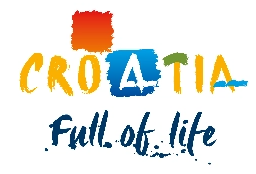


.jpg&w=3840&q=75)
5 Things You Need to See in Buje

By approaching the hilly landscape via the slowly rising roads, you will be able to see a spectacular view of the city. In that instant, you will know which sites you should visit.
St. Servolo Parish Church
Named after the patron of the city, this church, built in a baroque-classicist style, is situated in the very heart of the old town. It is unique in that it has seven altars and a valuable organ with a single keyboard. As this main Buje church is used only on the most formal of occasions, that is when it is the best time to visit it, in order to fully enjoy its splendor of sound.

St. Servolo Church Bell Tower
Right next to the church, there is a 15th-century bell tower, one that is among the tallest ones in Istria. I had the opportunity to climb the wooden stairs all the way to the top, which does require one to be in shape. The bells are a special attraction, as is the stunning view from the top.
.jpg&w=3840&q=75)
Church of St. Mary of Mercy
Located next to the other, 22-meter-high Buje bell tower which features a 17th century clock, this church is the traditional meeting spot for the people of Buje on the Sloboda Square. In the church, you can find invaluable works of art, among which is the sculpture of the Mother of Mercy thought to be one of the most beautiful wooden statues in Istria.
.jpg&w=3840&q=75)
Vineyards and Wine Roads
This typical Istrian landscape is one of the most famous wine roads in Croatia with as many as 23 famous wine producers! Grape and wine promotion should definitely not be missed! These happen during various events such as the Days of Grapes in Buje and Martinje in Momjan.
.jpg&w=3840&q=75)
Ethnographic Collection at the Museum
Located in a historic building on the main city square, the Buje Museum contains many hand made items of folk culture from Buje and the area surrounding it, which is called Bujština. I was particularly impressed by the reconstruction of an old Istrian house with a kitchen and a bedroom.


Author
Suzana Badrov
Suzana Badrov has been in love with Istria since her first visit as a small child, thanks to parents who spent every holiday there. Today, she adores to spent vacations in the Istrian region, and, as a great admirer of films and sports, she comes back to Motovun and the Istrian racing tracks every year.


Destinations
Additional Information


©2026 Colours of Istria. All rights reserved. No part of this site may be reproduced without our written permission.
















.jpg&w=3840&q=75)
.jpg&w=3840&q=75)




